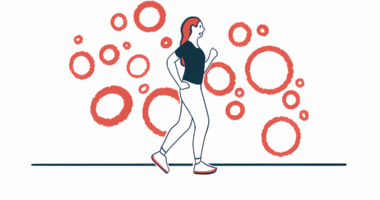10 Tips for Dealing with Chronic Pain

My previous columns about pain and chronic pain seem to have fallen a bit short for my liking. So, following are some commonsense tips that I use when medically appropriate. I hope they help you as they’ve helped me.
Tip 1: I exercise. It may seem counterintuitive that working malfunctioning muscles will help chronic pain, prevent falls (when combined with mindful movements), and improve quality of life. But core body strength offsets muscle weakness and coordination issues. So many options are available for finding an exercise program that motivates one to avoid stopping. My choice is gardening, because it combines the health benefits of nature and the ability to vary the type of motor task.
Tip 2: Decreasing stress is my second most important tip. Stress increases my physical symptoms and diminishes my mental and psychological well-being. Stress often is tied to self-imposed demands on one’s time and energy reservoir. I don’t have to give up on my dreams, just modify them several times to fit the disease.
Tip 3: I try to avoid toxic situations. Seeking sanctuary is not about escaping the realities of life, but rather giving me a chance to take a deep breath, evaluate, and control my reactions. Life is not perfect, but it can be worse by entering avoidable toxic situations.
Tip 4: Dangerous chemicals that are not medically prescribed, such as caffeine and nicotine, and food allergies add stress. Medication management is between your healthcare providers and you. I’m not afraid to speak up and let my providers know that a medication isn’t working. My brain is the best tool I have when used wisely.
Tip 5: Stay out of high heat and hydrate. I have problems regulating my body temperature and need to monitor water intake. I can’t rely only on feeling thirsty. The Parkinson’s brain signals malfunction, but I don’t have physical signals telling me to get fluids.
Tip 6: Maintain a healthy weight. I lost 30 pounds, which reduced my chronic pain. Exercising becomes easier. With less strain on our bodies, we function better.
Tip 7: Don’t hold back on bathroom visits. This seems like an unusual tip, but holding it in and delaying a bathroom visit puts extra stress on the muscles. These same muscles relieve the body of waste. If they are stressed, increased pain can occur. I can end up in the bathroom for hours afterward. Non-motor problems, such as constipation, diarrhea, or urinary and kidney problems, are well-documented in Parkinson’s disease. I map out accessible bathrooms when traveling away from home.
Tip 8: Modify as needed any activity that increases body rigidity. For me, this includes negative emotions, sitting too long without moving, post-exercise stiffness, sleeping, and unfortunately, orgasms. I am using a mindful approach to decrease the pain associated with rigidity.
Tip 9: I practice threshold management to keep emotions balanced. I don’t have to be an emotional zombie, but runaway emotions can adversely affect me and others around me.
Tip 10: Whenever possible, I try to be grateful, compassionate, and kind to myself with self-talk, and live with a lightness of being. Another Bionews columnist wrote about self-talk and not identifying oneself as “suffering” from a disease. That is a good alternative for me — acknowledging Parkinson’s existence, but not be defined by it.
Sleep and rest are crucial to my well-being and would be a top 10 tip, but I said earlier that if I couldn’t walk it, I wouldn’t talk it. Frankly, I still wrestle with sleep issues.
I intimately know that a deficit of sleep increases pain. As the pain goes up, rest and sleep become more difficult. It is a repetitive loop I have struggled with for more than a decade. The only tip I have found helpful is to take 10- or 15-minute breaks to stretch the muscles every two or three hours, even during sleep time. I can get six or seven hours of rest if I do this.
It is also important to embrace my support network. My partner and I communicate multiple times a day using a simple scaled response to, “How are you doing?” The scalar response is either “I’m doing good,” “medium,” “so-so,” “bad,” or having a “terrible day.”
Sometimes my partner and I face CHRONDI forcing, in which Parkinson’s and chronic pain force me to disengage from any type of motor activity. Using this scale in my communication informs my family when the daily routine needs adjusting.
Of course, my 10 tips won’t include everything that people find useful in addressing the combination of a chronic disease and chronic pain. Please share with us in the comments below your favorite tips.
***
Note: Parkinson’s News Today is strictly a news and information website about the disease. It does not provide medical advice, diagnosis or treatment. This content is not intended to be a substitute for professional medical advice, diagnosis, or treatment. Always seek the advice of your physician or another qualified health provider with any questions you may have regarding a medical condition. Never disregard professional medical advice or delay in seeking it because of something you have read on this website. The opinions expressed in this column are not those of Parkinson’s News Today or its parent company, Bionews Services, and are intended to spark discussion about issues pertaining to Parkinson’s disease.







Derek C. Marshall
Gardening...indeed, not just good physical activity (which can be varied according to need and ability), but also a psychological affirmation of growth, nurturing and aspiration of beauty.
Garrett McAuliffe
Adrenaline increases all of my symptoms. If I exercise or do heavy gardening near to my coming Off times, my symptoms are worse. Quite a dilemma. Being active but not stressed.
Dr. C
Hi Dr. G ~ Exactly! To exercise and not end up with overly rigid muscles is my new goal. I'm finding that I have to put in quite a bit of time for warm-up and cool-down for my muscles. In fact it's quite a bit more time than I imagined it ever would be. Always nice to read your comments. Keep on gardening!
Dr. C.
Mike Hoisington
For pain and depression, I do the following 4 things:
1. I do moderate exercise at least 3 times a week.
2. I try to avoid intense exercise that release endorphins that make me feel better.
3. I have a YouTube project I am working on that gives me a purpose that will help others.
4. I take medication that neutralizes mood swings and gives me a regular sleep.
Vince Taylor
Sitting at desk all day with the mental stress of work started taking its toll on my body so i followed the body pain treatment program from painsumo which helped me alot.